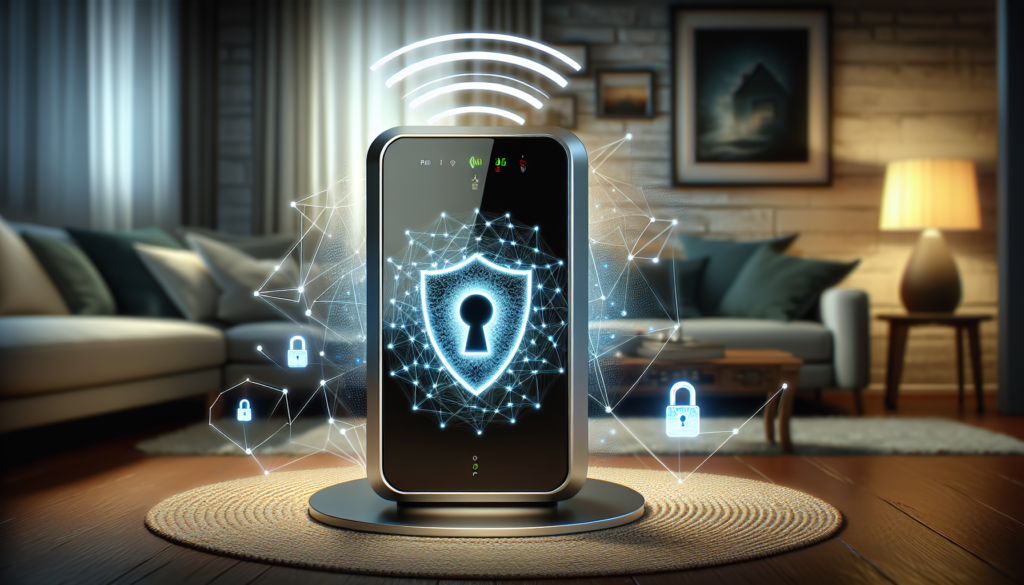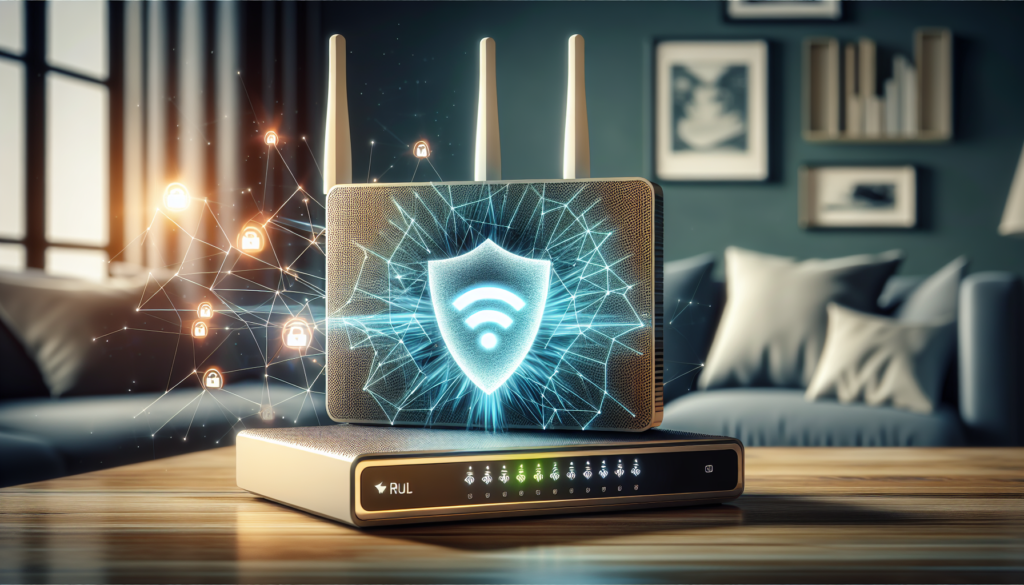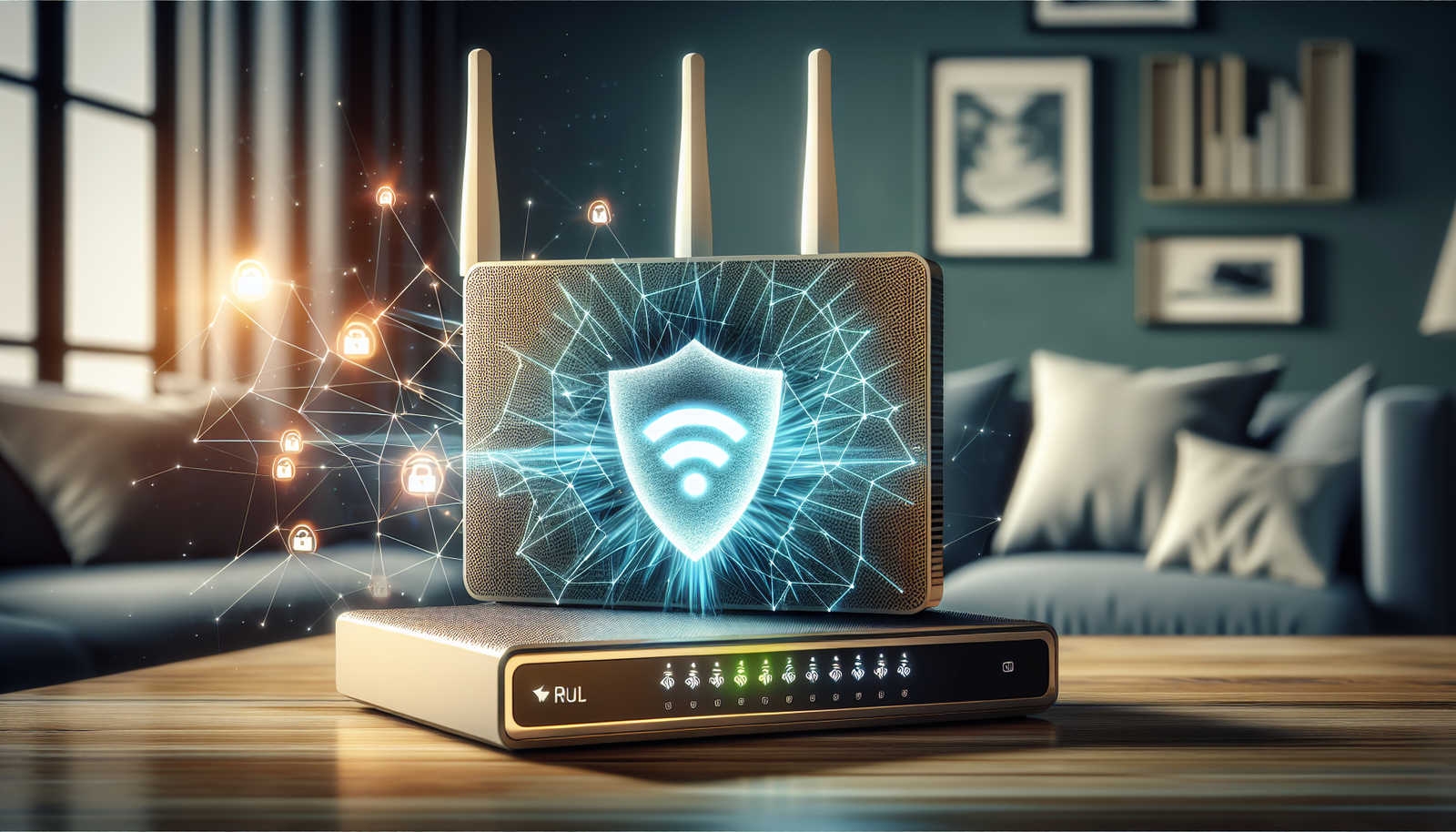Embarking on the journey to fortify your wireless sanctuary, you’ll find that Wi-Fi security systems represent the vital shields of our digital age.
Your quest to protect your personal Wi-Fi connections and passwords transcends mere defense—it’s about crafting a stronghold to keep your data secure and private.
As you wade through the complexities of safeguarding wireless networks, both small and grand, you’ll realize the gravitas of preventing unauthorized access, ensuring every byte of information remains under your control, untouched by prying eyes.
Wi-Fi security thus becomes not just a technical necessity, but a personal crusade to maintain the sanctity of your cyber realm.

Understanding Wi-Fi Security
The Importance of Wi-Fi Security
Wi-Fi security is crucial because wireless networks are an integral part of your everyday life.
On both personal and professional levels, you rely on Wi-Fi to stay connected.
Ensuring the security of a Wi-Fi network means protecting the integrity, confidentiality, and availability of the information that flows through it.
When your Wi-Fi is unsecured, you risk exposing sensitive data to cybercriminals who can exploit it for financial gain, identity theft, or to launch other malicious attacks.
Types of Wi-Fi Security Protocols
Your Wi-Fi network can be protected by different types of security protocols. These include WEP (Wired Equivalent Privacy), WPA (Wi-Fi Protected Access), WPA2, and the latest, WPA3.
Each protocol has been developed to provide a stronger defense against unauthorized access, but they vary significantly in terms of security and complexity.
Understanding which type your network uses is essential for assessing its robustness.
Evolution of Wi-Fi Security Standards
Wi-Fi security standards have evolved to improve protections against vulnerabilities. WEP, the oldest, was found to have significant flaws and has been largely replaced by WPA.
WPA introduced Temporal Key Integrity Protocol (TKIP), which was more secure at the time. WPA2, which uses the stronger AES (Advanced Encryption Standard) algorithm, became the security standard for many years.
More recently, WPA3 has emerged, offering even more secure features like individualized data encryption.
Inherent Vulnerabilities in Wi-Fi Networks
Despite advancements in security protocols, Wi-Fi networks have inherent vulnerabilities.
The signal broadcast can be intercepted, and if not adequately protected, cybercriminals can deploy attacks such as man-in-the-middle, network sniffing, or exploiting weak passwords.
Understanding these vulnerabilities is key to defending against them.
Assessing Wi-Fi Threats
Common Wi-Fi Security Threats
You should be aware of numerous security threats when it comes to Wi-Fi networks.
Unauthorized access to your network, phishing attacks, malware distribution, and even the unauthorized use of your network are common risks.
Recognizing these threats helps in preventing potential breaches.
Impact of Wi-Fi Security Breaches
A security breach on your Wi-Fi network can lead to data theft, unauthorized access to sensitive personal or business information, and even a compromised smart home system.
For businesses, the implications are broader, potentially leading to financial losses, damage to reputation, and legal repercussions.
Threat Intelligence for Wi-Fi Networks
Threat intelligence involves collecting and analyzing information about potential or existing threats to a network.
Staying informed about the latest security threats and understanding how they work can enable you to better protect your Wi-Fi network.
Securing Personal Wi-Fi Connections
Setting Up a Secure Home Wi-Fi Network
When setting up your home Wi-Fi network, there are critical steps to ensure security.
Start with changing the default username and password of your router, disabling WPS (Wi-Fi Protected Setup), and hiding your network SSID (Service Set Identifier).
These foundational steps make it harder for attackers to gain unauthorized access.
Best Practices for Personal Wi-Fi Security
Several best practices can enhance the security of your personal Wi-Fi.
These include using a strong and complex password, enabling network encryption, keeping your network’s firmware up to date, and regularly monitoring connected devices.
It’s also advisable to turn off the network when not in use, adding another layer of security.
Using Strong Encryption and Passwords
Your Wi-Fi network should always use the latest encryption standards, like WPA3 if available.
Paired with a strong, complex password—a mix of letters, numbers, and symbols—this encryption makes your network significantly more impregnable.
Keeping Personal Network Firmware Updated
Firmware updates often include security patches that address new vulnerabilities.
Keeping your router’s firmware updated ensures that emerging security threats are mitigated, thus keeping your personal network secure.

Implementing Wi-Fi Security in Businesses
Designing a Secure Wireless Network Infrastructure for Businesses
Designing a secure Wi-Fi infrastructure for businesses involves careful planning.
Using the latest equipment, segmenting networks by role or department, and implementing robust encryption standards are crucial to safeguarding business data.
Utilizing Advanced Security Solutions for Enterprise Wi-Fi
For additional security, businesses may employ advanced solutions such as intrusion detection and prevention systems, security information and event management (SIEM) tools, and sophisticated firewall technologies.
These systems offer another defensive layer by continuously monitoring and reacting to potential threats.
Balancing Accessibility and Security in Corporate Networks
A secure corporate network does not mean that accessibility has to be compromised.
Businesses should strive to achieve a balance where employees can conveniently connect to the network while ensuring that security is not jeopardized.
Regular Security Audits and Policy Reviews
Regular audits of your security infrastructure and reviews of company Wi-Fi policies ensure that defenses remain strong against new threats.
These audits can reveal security gaps needing attention and keep security measures aligned with current best practices.
Authentication and Access Control
Role of Authentication in Wi-Fi Security
Authentication acts as the first line of defense in Wi-Fi security, verifying that only authorized users can access the network.
Effective authentication mechanisms reduce the risk of unauthorized access, a vital component of a comprehensive Wi-Fi security strategy.
Different Access Control Mechanisms
Access control mechanisms restrict network access to verified users and devices.
These range from MAC address filtering and network segmentation to employing RADIUS servers for centralized authentication of wireless users.
Multi-factor Authentication for Wi-Fi Access
Multi-factor authentication (MFA) adds another layer of security by requiring users to present two or more verification factors to gain network access.
This might include a password plus a biometric input or a token.
Network Access Control (NAC) Systems
Network Access Control systems allow businesses to precisely control who can access their network and enforce policies regarding devices’ adherence to security standards before they are allowed to connect.
Encryption and Data Protection
Understanding Wi-Fi Encryption Methods
Wi-Fi encryption methods like WEP, WPA, and WPA2 encrypt data transmitted over wireless networks to keep it secure.
These methods have evolved, with WPA3 offering improved security features, such as individualized data encryption and protection against brute-force attacks.
Importance of End-to-End Encryption in Wi-Fi Networks
End-to-end encryption ensures that data sent over a Wi-Fi network remains confidential from the source device to the destination.
It’s a crucial mechanism to maintain privacy and security, preventing third parties from eavesdropping on your data.
Deploying VPNs for Wi-Fi Security
Using a Virtual Private Network (VPN) on Wi-Fi can enhance security, especially on public networks.
A VPN creates an encrypted tunnel for your data, effectively disguising your online activities and protecting your data from potential interception.
Data Masking and Anonymization Techniques
Data masking and anonymization techniques can protect sensitive information even if a breach occurs.
These techniques replace or remove identifying information in data sets, reducing the risk of personal data being linked back to an individual.
Monitoring and Management Tools
Utilizing Wi-Fi Security Monitoring Software
Employing Wi-Fi security monitoring software helps in keeping an eye on network traffic, detecting anomalies, and responding to threats quickly.
It can alert you to suspicious activities that could indicate a security breach in your network.
Importance of Real-Time Network Monitoring
Real-time network monitoring is essential in detecting threats as they happen, allowing for immediate responses to potential issues.
It reduces the window of opportunity for attackers to exploit vulnerabilities in your Wi-Fi network.
Configuring Wi-Fi Intrusion Prevention Systems (WIPS)
Configuring Wi-Fi Intrusion Prevention Systems (WIPS) is crucial for business networks.
WIPS can automatically detect and counteract threats, such as unauthorized devices trying to connect or malicious attacks, without human intervention.
Using Centralized Management for Network Security
Centralized management provides a singular point of control over network security settings and policies.
It simplifies the process of updating configurations, applying patches, and managing network-wide security measures.
Advanced Wi-Fi Security Features
Wireless LAN Controller (WLC) Security Features
Wireless LAN Controllers can centralize decision-making for wireless networks and add significant security features, such as sophisticated authentication methods, guest networking capabilities, and advanced encryption use.
Fast and Secure Roaming Protocols
For businesses with large campuses or multiple locations, fast and secure roaming protocols ensure seamless and secure transitions between Wi-Fi access points, preventing connection drops and maintaining security standards.
Implementing WPA3 for Enhanced Security
Businesses and individuals should consider implementing WPA3, the latest
Wi-Fi security standard that provides stronger encryptions, individualized encryption on open networks, and better protection against password-guessing attacks.
Guest Network Segmentation and Isolation
Creating separate networks for guests can reduce the risk of unauthorized access to your main network.
This approach isolates external users from your critical resources while still providing them with internet access.
Educating Users About Wi-Fi Security
Raising Awareness Through Wi-Fi Security Training
Providing Wi-Fi security training to all network users, particularly in a business environment, is key to preventing breaches.
Educated users are an effective line of defense against many common Wi-Fi security threats.
Developing Strong Security Policies and Practices
Effective Wi-Fi security policies and practices guide user behavior and help maintain network security.
Such policies should be clear, accessible, and regularly updated to reflect the latest security landscape.
Common User Mistakes that Compromise Wi-Fi Security
Users often engage in risky behaviors such as using weak passwords, sharing credentials, and connecting to insecure public Wi-Fi networks without protection.
Understanding these mistakes is the first step towards preventing them.
Creating a Culture of Security within Organizations
A culture of security in an organization empowers all members to value and protect the confidentiality and integrity of information.
It encourages proactive security behaviors and accountability.
Troubleshooting and Resolving Wi-Fi Security Issues
Identifying and Analyzing Security Incidents
An effective response to Wi-Fi security incidents begins with quick identification and thorough analysis.
Knowing what to look for and having systems in place to alert you to possible incidents are critical.
Step-by-Step Troubleshooting for Wi-Fi Security
Troubleshooting Wi-Fi security issues involves a structured approach:
Identifying the problem, isolating the affected areas, applying corrective measures, and documenting the process for future reference.
Effective Incident Response and Recovery Plans
Having a well-documented incident response and recovery plan is essential.
It should outline steps to be taken in the event of a security breach, ensuring a rapid return to normal operations.
Case Studies: Learning from Wi-Fi Security Breaches
Examining case studies of past Wi-Fi security breaches can offer valuable insights.
Understanding how breaches occurred and how they were resolved can guide you in strengthening your defensive strategies.
Through mindful implementation of security protocols, staying abreast of threats, and fostering a proactive security culture, you can effectively mitigate the risks associated with Wi-Fi networks and protect your valuable digital assets.

